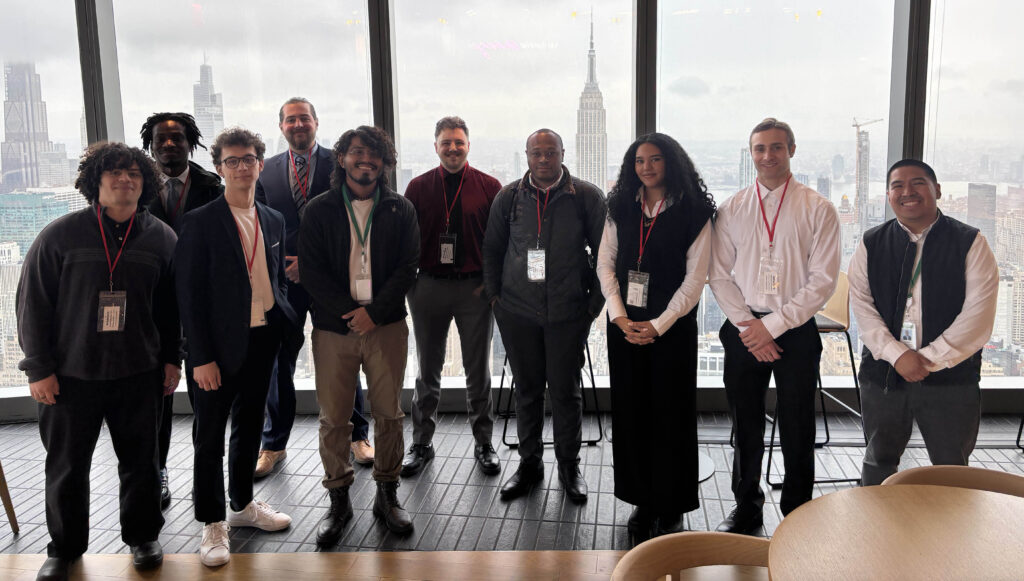Your professional image is a significant factor in how others perceive you and can provide a competitive advantage. When working in an office or interviewing in person or online, your goal is to showcase your professionalism and attention to detail. A polished, neat appearance communicates that you are organized and dependable.
- Remember: Workplace attire and campus fashion are often different, dress to align with the professional environment you’re entering.

When in Doubt, Overdress
If you’re unsure about what to wear it’s better to be overdressed than underdressed. While your personal style is important, a job interview and the workplace is not the ideal place to showcase it. A professional, formal look aligns with the standards of most workplaces and demonstrates your respect for the opportunity.
Professional Appearance: Making a Strong First Impression
Your appearance in the workplace or for an interview is an important part of making a positive first impression. It conveys respect for the occasion and demonstrates your understanding of professional norms. Follow this guide to presenting yourself effectively:
General Presentation & Grooming:
Keep your look simple until you become accustomed to the environment and learn about the company’s dress code, especially if you are in the interview stage. While some industries may allow a more casual look, it is always best to observe and confirm this on the job rather than making assumptions. These are general guidelines that are safest to follow, but it is up to each individual to decide how much they want to modify their look. For example, showing piercings and tattoos may be against policy for some employers, so we will recommend it is safest to remove or cover. However, it is a personal decision to make if you rather be your authentic self, even if it may mean an employer will not select you.
- Cleanliness & Tidiness: Ensure your clothes are clean, wrinkle-free, and well-maintained. Your overall appearance should be neat and tidy, including well-groomed hair and nails. Have no unclean nails or hands.
- Scent: Opt for a light or no fragrance. Avoid strong perfumes, colognes, or body sprays, as these can be distracting or cause discomfort for others.
- Facial Hair & Hair Styling: If you have facial hair, ensure it’s neatly trimmed and styled. Keep your hair tidy, whether it’s long or short.
- Tattoos: ensure tattoos maintain a neutral and professional appearance, cover up any that don’t meet these criteria, if possible.
Your Attire:
- Professional Attire: Choose business casual attire. This typically includes items like button-down shirts, blouses, slacks, professional dresses, or skirts.
- Avoid Overly Casual: Stay away from very casual clothing such as t-shirts, sweatpants, or activewear.
- Clothing Coverage: If wearing a skirt or dress, ensure the length is professional, generally falling to or just below the knee. Avoid tank tops, see through or low cut shirts as well.
Footwear:
- Professional Shoes: Opt for clean, polished dress shoes in black or brown, such as loafers, dress shoes, or professional flats. Some companies may allow simple sneakers.
- Avoid: Flip-flops and sandals.
Accessories & Makeup:
- Jewelry: Keep jewelry non-distracting. Simple earrings, a watch, or a necklace are generally appropriate.
- Makeup & Nail Polish: If you choose to wear makeup or nail polish, keep it subtle and neutral. The goal is a polished look, not a distracting one.
